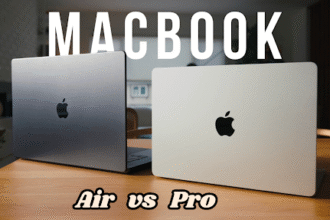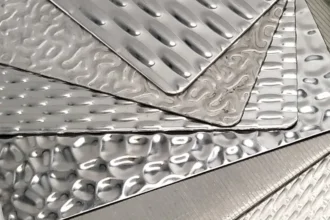The fast-developing healthcare sector depends on technology which relies chiefly on powerful but very small medical PCB assembly. Modern medical devices including life-saving surgical tools and simple monitors function through printed circuit boards (PCB). People who work with medical PCB assembly need to understand both its operational aspects and its vital importance for manufacturers as well as healthcare providers and technical innovators.
This text examines medical PCB assembly starting with its key aspects including components as well as applications and challenges together with future prospects.
What Is Medical PCB Assembly?
The manufacturing process of circuit boards for medical devices follows procedures specifically dedicated to medical PCB assembly. The demanding applications require PCBs that need to achieve superior levels of safety and reliability together with strict quality requirements.
Medical PCB assembly requires strict compliance with both ISO 13485 and FDA guidelines because standard PCB assembly protocols do not fulfill the necessary quality standards. The testing process verifies that every board operates perfectly in medical settings because slight failures can endanger human lives.
Key Components in Medical PCB Assembly
PCBs used in medical devices require unique components and configurations. Let’s look at some of the most common and critical elements found in these assemblies:
| Component Type | Description | Function in Medical Devices |
| Microcontrollers | Small computing units | Control device operation and logic |
| Sensors | Detect various physical signals | Monitor heart rate, temperature, etc. |
| Power Management ICs | Manage power distribution | Ensure battery efficiency and safety |
| Flexible Substrates | Bendable circuit layers | Enable compact and wearable designs |
| Surface-Mount Devices | Miniature components placed directly on PCB | Optimize space in small devices |
These components allow for compact, efficient, and reliable operation, making medical PCB assembly a cornerstone of innovation in healthcare.
Applications of Medical PCB Assembly
The scope of medical PCB usage has grown dramatically in recent years. Today, medical PCBs can be found in nearly every aspect of modern healthcare:
- Diagnostic Equipment – MRI machines, CT scanners, and blood analyzers rely on precision PCBs for accurate operation.
- Monitoring Devices – ECG monitors, pulse oximeters, and glucose meters use compact PCBs to track vital signs.
- Wearables – Smart medical watches and wearable ECG patches require flexible, lightweight PCB solutions.
- Implantable Devices – Pacemakers and neurostimulators use miniature, highly reliable PCBs.
- Surgical Tools – Electronic scalpels, robotic arms, and endoscopic tools are powered by advanced PCB assemblies.
Regulatory and Safety Standards
In the medical industry, there is no room for error. That’s why regulatory compliance is non-negotiable in medical PCB manufacturing. Some critical standards include:
- ISO 13485 – Specifies quality management systems for medical devices.
- IPC Class III Standards – Cover high-performance electronic products like life-sustaining medical equipment.
- FDA Regulations (21 CFR Part 820) – Require design controls and process validation for medical devices.
Manufacturers engaged in medical PCB assembly company must follow rigorous testing and inspection protocols such as:
- In-circuit testing
- Functional testing
- Burn-in testing
- Cleanroom assembly procedures
Challenges in Medical PCB Assembly
Despite advances in technology, the path to successful medical PCB production isn’t without hurdles. Here are a few notable challenges:
1. Miniaturization
The trend indicates that both wearable technology and implantable devices shrink in size. The development of reliable compact PCBs remains essential due to strict operational requirements.
2. Biocompatibility
Medical implants using PCBs need biocompatible materials made from substances that avoid tissue reactions in humans.
3. High Reliability
Medical devices that save lives demand PCBs to operate without failure for numerous years due to their critical nature.
4. Heat Management
High-performance PCBs automatically produce thermal energy which needs proper management techniques when operating inside restricted spaces.
5. Strict Compliance
The process of meeting regulatory standards requires lengthy work which leads to market approval and maintains public trust.
Medical PCB assembly safety together with effectiveness improves throughout the industry when manufacturers solve these issues.
The Future of Medical PCB Assembly
The future of medical devices is bright—and PCBs are right at the center of it. Here are some trends shaping the future of medical PCB assembly:
- Flexible and Stretchable Electronics – Ideal for wearables and skin-mounted devices
- AI Integration – Smarter monitoring systems and diagnostics powered by AI chips on PCBs
- Wireless Communication – Enhanced connectivity via Bluetooth, Wi-Fi, or 5G modules
- 3D-Printed PCBs – Faster prototyping and personalized device development
- Eco-Friendly Materials – Focus on sustainable, lead-free soldering and recyclable substrates
As these technologies evolve, medical PCBs will become more efficient, more powerful, and more adaptable to patient needs.
Why Medical PCB Assembly Matters
Medical PCB technology stands crucial for both surgical intervention under surgeon control and remote patient care monitoring operations. Circuits represent only part of what matters because connection along with precise execution and compassionate care comprise the whole picture.
Medical operations depend completely on small circuit boards which operate with perfect precision. Medical PCB assembly utilizing innovation together with strict standards and precision engineering powers the future of health.
Final Thoughts
Medical PCB assembly sophistication and significance increase parallel to the advancements in healthcare technology. The critical components of these devices have evolved from device parts to take on the status of the device itself. Unseen forces within medical PCBs power both technological advancement and life-saving medical processes in all stages of treatment.
Medical device manufacturers alongside innovators need to gain full comprehension of how medical PCB assembly works. Correct design combined with appropriate materials along with suitable processes determines whether a product performs well or exceptionally and in some cases even preserves human life.

















